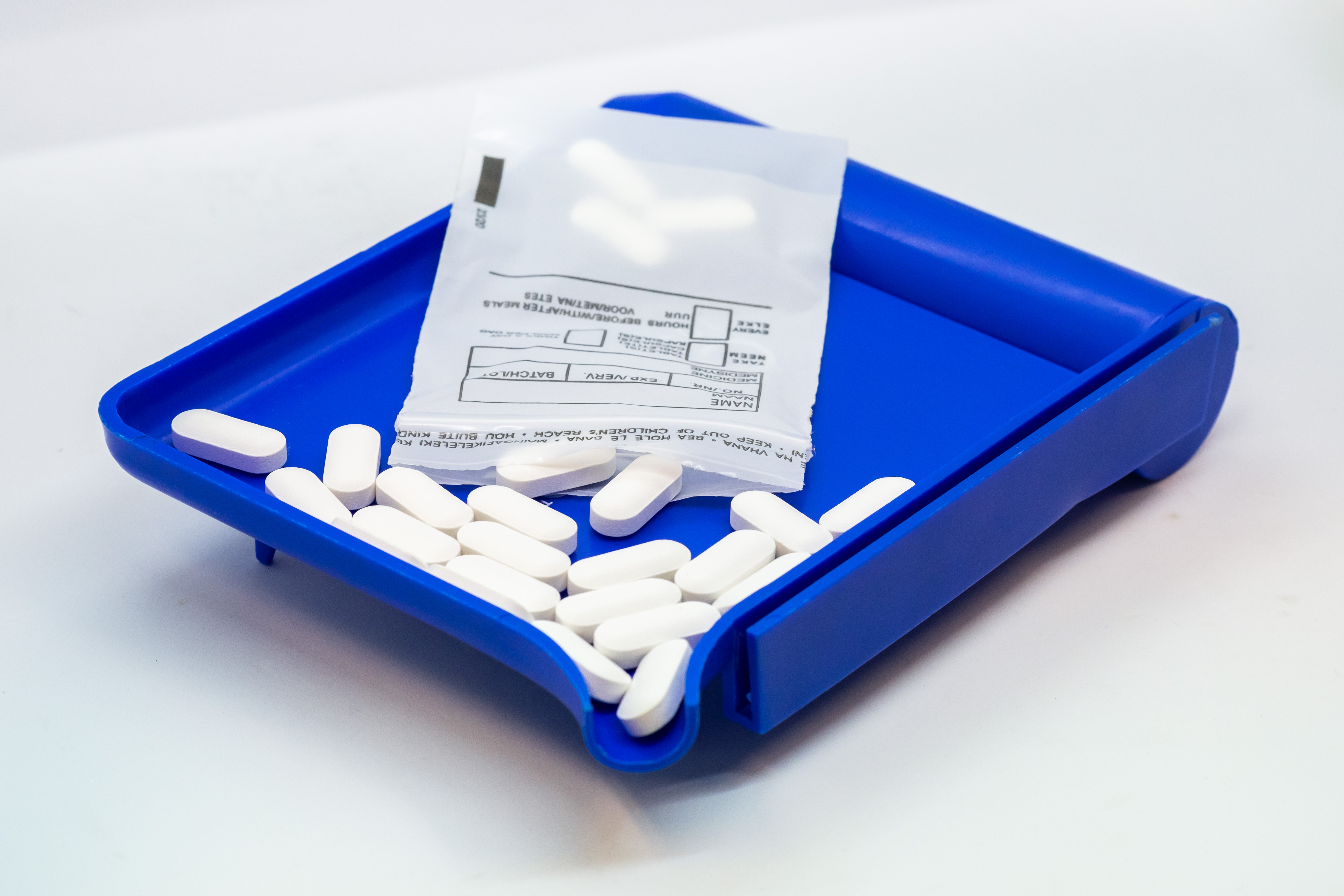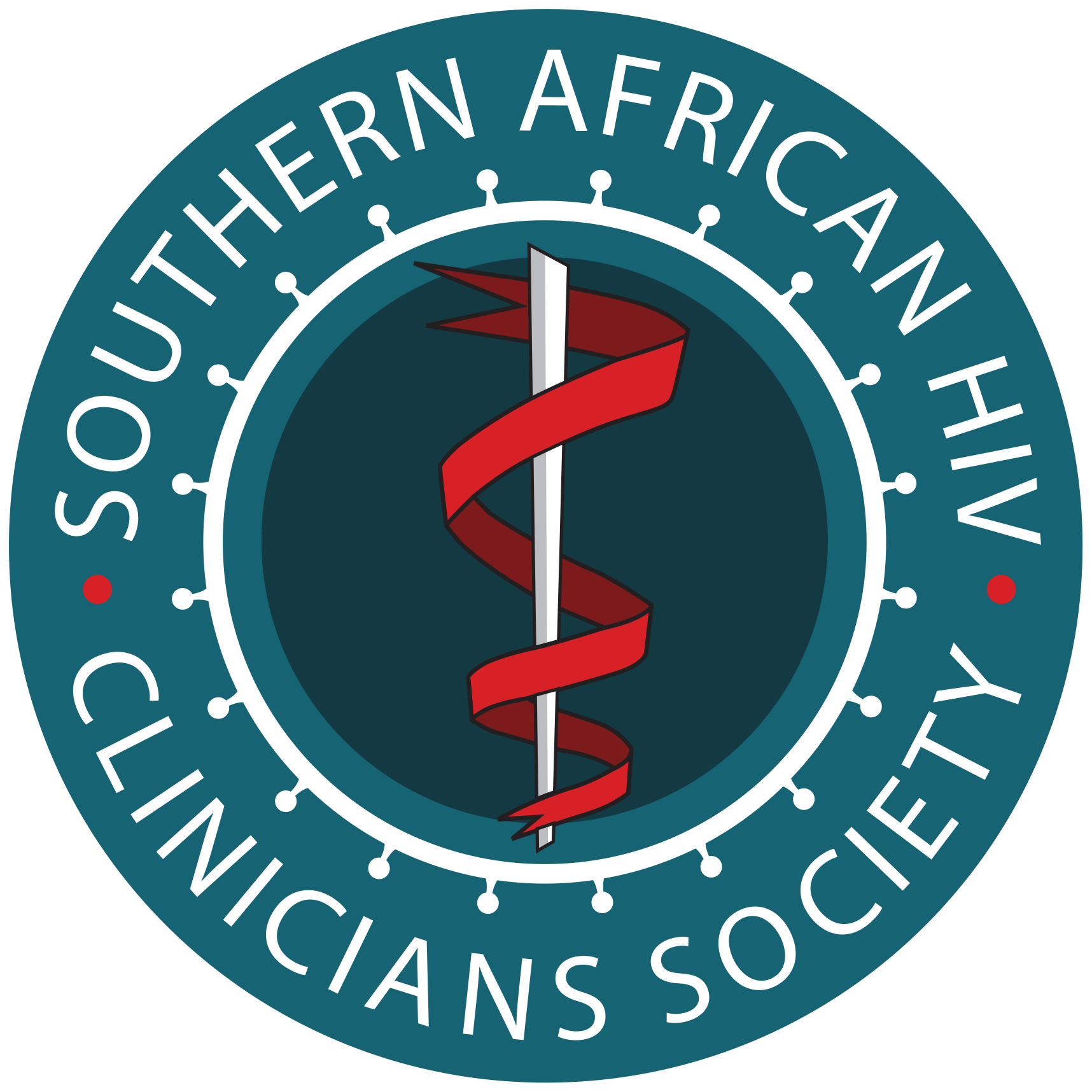ART Guidelines
References

 Key points
Key points
- Efavirenz (EFV) remains an ART option for patients who tolerate DTG poorly, or where DTG is contraindicated or declined.
- EFV 400 mg is virologically non-inferior to EFV 600 mg and offers a somewhat improved side-effect profile. The 400 mg formulation is preferred in most instances, except for those patients receiving rifampicin (RIF)- based tuberculosis (TB) treatment, to whom 600 mg should be given.
- Rilpivirine (RPV) is another alternative but cannot be co-administered with RIF-based TB treatment, and should not be started in patients with a VL > 100 000 copies/mL.
Non-nucleoside reverse transcriptase inhibitors (NNRTIs) work by binding irreversibly to HIV’s reverse transcriptase enzyme, which causes a conformational change in the enzyme’s active site and impairs its functioning. The four NNRTIs currently available in Southern Africa are efavirenz (EFV), nevirapine (NVP), rilpivirine (RPV) and etravirine (ETR).
Efavirenz (EFV) is available in 600 mg and 400
mg formulations, and both are now available
as fixed dose combinations (FDC).
EFV 600 mg is
available in public sector programmes in South Africa
and there is extensive clinical experience with the
formulation. EFV 400 mg demonstrated non-inferior
efficacy with moderately improved tolerability in the
ENCORE1 study.
39
However, there are only limited
pharmacokinetic data in pregnant patients, and in
patients receiving RIF-based tuberculosis treatment.
For most patients requiring EFV, EFV 400mg should be
used unless they are also on RIF-based tuberculosis
treatment, in which case EFV 600mg should be used.
EFV frequently causes neuropsychiatric effects in
the first few weeks of therapy, typically presenting
with insomnia, vivid dreams and dizziness. Both
dysphoria and euphoria may occur. EFV may also
cause a skin rash, which is usually mild. Patients
starting EFV should be warned about these symptoms
and reassured that they resolve in most patients
continuing the drug after the first few weeks but, if
not, an alternative can be substituted. Psychosis and
Stevens-Johnson syndrome may occasionally occur. If
the neuropsychiatric effects of EFV are not tolerated,
then drug switching is recommended.
Recently, a late-onset encephalopathy syndrome
has been linked to EFV.
40
This is characterised by a
subacute encephalopathy and cerebellar dysfunction
including ataxia, frequently presenting months
to years after commencing EFV, and is associated
with supratherapeutic EFV levels. Patients who
are genetically slow metabolisers of EFV may be
predisposed to this syndrome. Two common CYP2B6
polymorphisms linked to slow EFV metabolism have
been shown to occur with increased frequency in
patients of African descent.
41
This predisposition to
toxic EFV levels may be further exacerbated in patients
of low body weight and in those taking concomitant
isoniazid, which inhibits an accessory EFV metabolism
pathway via CYP2A6. Patients with a compatible
clinical syndrome, in the absence of an alternative
cause, should have plasma EFV levels measured and
should be switched to a non-EFV-based regimen in
the interim. Clinical improvement is typically seen
within 10–21 days after stopping EFV.
EFV may also cause drug-induced hepatitis. A subset
of these cases appears to occur relatively late,
several months or even years after the drug has
been initiated.
42
It is important that this diagnosis is
considered in the differential diagnosis of a subacute
hepatitis syndrome.
Gynaecomastia can occur with the use of EFV.
43
This is
not related to lipodystrophy. The onset occurs several
months after initiation of ART, and it may be bilateral
or unilateral. The mechanism appears to be related
to oestrogen receptor activation in breast tissue
by EFV.
44
It is important to exclude other common
causes of gynaecomastia, such as other medications
(including spironolactone, calcium channel blockers
and metoclopramide). A serum testosterone test
is useful in excluding hypogonadism as a cause. If
serum testosterone is low, then other appropriate
investigations should be done to identify the cause
and be managed accordingly. If serum testosterone
is normal, then EFV should be substituted for another
drug. Resolution of gynaecomastia is generally slow,
taking months, and may be incomplete in a small
percentage.
45
It is therefore important to manage the
expectations of the patient in this regard.

Another option in first-line ART is rilpivirine (RPV),
a second-generation NNRTI
. RPV is inexpensive
and is available in fixed dose combination (FDC)
combination on its own or as a with DTG. An
important drawback is that it should not be started
in patients with a VL > 100 000 copies/mL, as it is
inferior to EFV in such patients.
46
RPV has a lower
incidence of neuropsychiatric side-effects and rashes
than EFV.
47
There are several important drug-drug
interactions with RPV. Among other considerations,
RPV cannot be co-administered with RIF or protonpump inhibitors (PPIs). H2-receptor antagonists need
to be administered 12 hours before or 4 hours after
taking RPV. RPV must be taken with food to increase
absorption.

- Prescribing RPV without first checking baseline VL. RPV is less efficacious than comparator drugs when VL > 100 000 copies/mL.
- Forgetting that RPV needs to be taken with food.
We do not recommend nevirapine (NVP) for new patients starting ART due to the severe toxicity that may be associated with its use. Although toxicity after the first 3 months of NVP treatment is unlikely, we also strongly recommend switching all patients currently on NPV to a more robust once-daily regimen.
Etravirine (ETR) is a second-generation NNRTI that has been studied in treatment-experienced patients rather than in ART-naïve patients. 48 As is seen with RPV, ETR’s activity is not affected by the first generation NNRTI’s signature K103N resistance mutation.
Development of a rash is common in the first 6 weeks of therapy with an NNRTI; notably more severely and frequently with NVP. If the rash is accompanied by systemic features (e.g. fever, elevated alanine transaminase (ALT) or hepatitis), mucosal involvement or blistering, then the NNRTI should be discontinued immediately, and re-challenge must be avoided as these are features of life-threatening reactions. If the rash is mild and occurs without these features, then the NNRTI can be continued, and the rash can be treated symptomatically with antihistamines and possibly topical steroids. Systemic steroids should not be used. If there was a severe reaction to EFV or NVP, then we do not recommend switching to RPV or ETR – rather use DTG or a protease inhibitor (PI). Dosage and common adverse drug reactions of nonnucleoside reverse transcriptase inhibitors available in Southern Africa are described in Table 5.

Common pitfall: Immediately discontinuing an NNRTI in the case of a mild rash without systemic features Such rashes often resolve if treatment is continued, though close monitoring is required.
| TABLE 5: Dosage and common adverse drug reactions of non-nucleoside reverse transcriptase inhibitors available in southern Africa. | ||
| Drug | Recommended dosage | Common or severe ADR† |
|---|---|---|
| EFV | 600 mg at night (400 mg at night if < 40 kg) 400 mg dose can also be used in patients > 40 kg |
CNS symptoms (vivid dreams, problems with concentration, dizziness, confusion, mood disturbance, psychosis, late-onset encephalopathy), rash, hepatitis, gynaecomastia |
| NVP | 200 mg daily for 14 days then 200 mg 12-hourly | Rash, hepatitis |
| RPV | 25 mg daily with food | Rash, hepatitis, CNS symptoms (all uncommon) |
| ETR‡ | 200 mg 12-hourly | Rash, hepatitis (both uncommon) |
|
ADR, adverse drug reaction; CNS, central nervous system; EFV, efavirenz; ETR, etravirine; NNRTI, non-nucleoside reverse transcriptase inhibitors;
NVP, nevirapine; RPV, rilpivirine; RIF, rifampicin. †, Life-threatening reactions are indicated in bold; ‡, NNRTI combinations to be avoided due to drug interactions include: (i) ETR + ATV/r and (ii) ETR + DTG unless a boosted PI is also used in the combination. |
||
